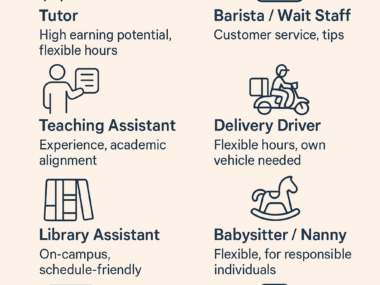For many individuals around the world, Canada represents a land of opportunity. With the recent temporary policy that allows visitor visa holders to apply for work permits within the country, there’s a growing interest in using a visitor visa as a stepping stone to securing work.
However, transitioning from a visitor visa to a work permit involves a process that’s more complex than it may appear. This guide provides an in-depth look into everything you need to know about this pathway, so you can approach it with realistic expectations and a solid plan.
1. Canada’s Visitor Visa to Work Permit Policy: What Is It?
Canada’s visitor visa to work permit policy is part of a temporary measure aimed at making it easier for people already in Canada on a visitor visa to apply for a work permit without leaving the country. Here’s a breakdown of the key components:
- Policy Intent: Originally, this policy was designed to address certain workforce needs, allowing those already in Canada to fill essential roles without requiring them to leave and reapply. However, it doesn’t bypass Canada’s labor requirements.
- Eligibility Requirements: Only those who receive a genuine job offer from a Canadian employer may apply for a work permit. The offer must meet specific criteria, including the need for an LMIA (Labor Market Impact Assessment), which serves as proof that the employer couldn’t find a Canadian worker for the job.
This pathway represents a unique opportunity, but understanding the legal framework and requirements is crucial before deciding to pursue this route.
2. Common Myths About Converting a Visitor Visa to a Work Permit
Many misconceptions surround this policy, often due to misleading information from unofficial sources or incomplete explanations. Here are some prevalent myths and the reality behind them:
- Myth #1: The Process is Simple and Direct – Converting a visitor visa to a work permit requires careful planning, persistence, and meeting specific criteria. Without a job offer and an LMIA, it’s nearly impossible to transition.
- Myth #2: Employers are Eager to Hire Visitors – Not all employers are willing to invest the time and resources needed to hire someone on a visitor visa. Many prefer applicants who already have the legal right to work in Canada.
- Myth #3: An LMIA is Easy to Get – Obtaining an LMIA requires effort and expense on the employer’s part. Employers must demonstrate that no qualified Canadian citizen or permanent resident is available for the role.
3. Deciphering the Labour Market Impact Assessment (LMIA)
The LMIA is a crucial document for transitioning to a work permit. Here’s what you need to understand about the LMIA and its significance:
- What is an LMIA?: The LMIA is a government-issued document that permits Canadian employers to hire foreign workers. To receive one, employers must prove they attempted to hire a Canadian for the job but couldn’t find a qualified candidate.
- Employer Responsibilities: Employers must advertise the job for at least 30 days on national job boards and demonstrate efforts to recruit within Canada. This process costs approximately CAD 1,000, which can be a deterrent for some employers.
- Challenges with the LMIA: Employers unfamiliar with the LMIA process may avoid hiring foreign workers, preferring those who already have work authorization. As a visitor, it’s crucial to find employers who understand the LMIA process or have a specific need for your skills.
4. The Realities of Job Hunting on a Visitor Visa
While it’s possible to find work on a visitor visa, the process is often more challenging than anticipated. Here are several challenges and considerations:
- Limited Job Opportunities: Most employers prefer candidates with immediate work authorization. As a visitor, you’ll face additional hurdles in securing employment.
- Time Constraints: Visitor visas are typically valid for six months, meaning you must secure a job offer, complete the LMIA process, and apply for a work permit within this period.
- Housing and Financial Considerations: Renting an apartment without a job offer or SIN (Social Insurance Number) can be difficult, as landlords may be reluctant to rent to someone without a steady income.
5. Practical Steps to Increase Your Chances of Success
Although challenging, several strategies can help increase your chances of finding a job and transitioning to a work permit:
- Persistence and Consistency: Don’t give up after a few rejections. Tailor your resume to Canadian standards, enhance your interview skills, and continue applying for positions daily. Some successful applicants report applying to hundreds of jobs before securing a position.
- Leveraging Networking Opportunities: In Canada, networking plays a significant role in job searching. Attend local job fairs, join online Canadian networking groups, and connect with people in your industry on LinkedIn. Networking can often open doors that formal applications cannot.
- Be Open to Relocating: Smaller towns or rural areas may face labor shortages and be more open to hiring visitors. In contrast, larger cities like Toronto or Vancouver are often competitive, with an abundance of job seekers, making it harder for visitors to stand out.
6. What to Do if You Don’t Secure a Work Permit
It’s essential to have a backup plan in place. Here are some viable alternatives if your work permit application isn’t successful:
- Returning and Reapplying: Once your visitor visa expires, you can return to your home country and reapply if you find a more promising job prospect.
- Exploring a Study Permit: A study permit can be a powerful alternative. By studying in Canada, you gain the opportunity to work part-time and potentially qualify for a Post-Graduate Work Permit (PGWP) after your studies, which can be a pathway to permanent residency.
- Seeking Asylum Cautiously: Although declaring asylum is an option, it’s not to be taken lightly. Asylum applications are intended for individuals facing genuine persecution, and a failed claim can result in deportation and ineligibility for future applications.
7. Beware of Costly LMIA Scams
Scams targeting foreign job seekers are not uncommon, and fraudulent LMIA offers are a significant risk. Here’s how to avoid costly mistakes:
- Avoid Paying for LMIAs: Some fraudulent companies or individuals may offer to sell you an LMIA. However, legitimate LMIAs are issued by employers only, and paying for one is illegal.
- High Prices for Fake Offers: Scams may cost CAD 25,000 or more and leave you with no work permit. It’s always advisable to verify an LMIA offer through official Canadian government channels.
- Recognizing Genuine Employers: Ensure that the employer offering the job is reputable and willing to follow the LMIA application process. Only work with verified and legitimate Canadian recruitment agencies.
8. Alternative Pathways to Permanent Residency
Canada offers several immigration pathways designed to attract skilled foreign workers. Some of these programs may allow you to achieve permanent residency without relying on a visitor visa. Here are some prominent options:
- Express Entry Program: The Express Entry program allows skilled workers to apply for permanent residency based on factors like work experience, education, and language proficiency. It operates on a points-based system and is a popular option for skilled workers globally.
- Provincial Nominee Program (PNP): Many Canadian provinces and territories run PNPs to address local labor market needs. PNPs are an excellent choice if you have specific skills in demand in a particular region.
- Canadian Experience Class (CEC): After working in Canada on a valid work permit, you may be eligible to apply for permanent residency through the CEC. This program is ideal for those with Canadian work experience and a demonstrated commitment to staying in Canada.
9. Practical Tips for Transitioning from Visitor Visa to Work Permit
For those determined to make the transition, here are some additional tips to improve your chances of success:
- Develop a Solid Plan and Backup Options: It’s essential to plan for different scenarios. Having a plan B, such as studying in Canada, can provide you with more options if your initial work permit attempt doesn’t succeed.
- Stay Up-to-Date with Immigration Policies: Canada’s immigration policies may change, and new programs or temporary measures may arise that could impact your application options. Following reliable immigration resources or consulting with a professional immigration consultant can help you stay informed.
- Consider Remote or Seasonal Work: Some industries in Canada, particularly in rural areas, may have temporary or seasonal work that could help you get a foothold in the job market. Once you’re working legally in Canada, it may be easier to transition to a more permanent role.
10. Key Takeaways and Final Thoughts
Transitioning from a visitor visa to a work permit in Canada can be a complex process requiring preparation, patience, and a willingness to adapt. Many people approach this transition with high hopes, only to realize the journey is not as straightforward as it may seem.
Understanding the limitations and requirements of a visitor visa is essential for anyone looking to make the shift to a work permit. Having a backup plan, focusing on networking, and being strategic about job searching and location can significantly improve your chances of success. As always, avoid relying on misinformation and consult reliable resources to make informed decisions.

